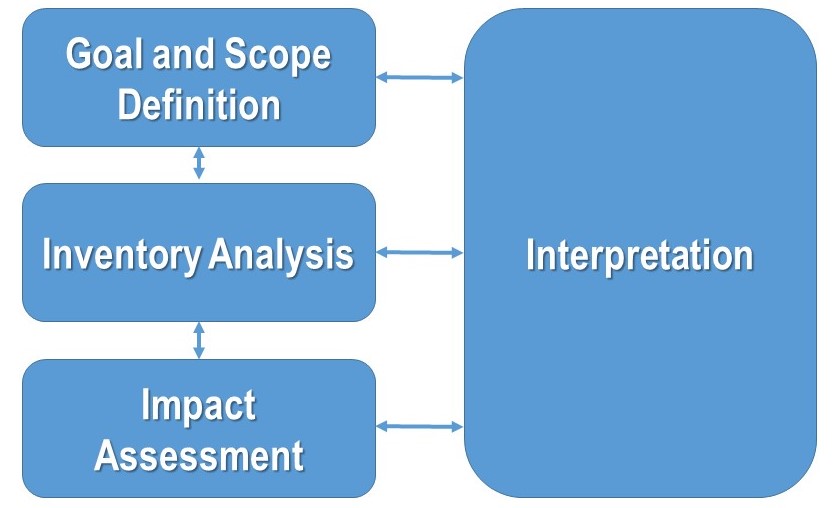Although a Life Cycle Analysis provides the foundations to determine is sustainability goals are being accomplished, it lacks the context that enables the key actors to translate observations from the LCA into actionable items. Guidelines for LCA implementation have been produced by the International Organization for Standardization (i.e., ISO 14040 and ISO 14044), the Society of Environmental Toxicology and Chemistry, and the Environmental Protection Agency in the United States.
According to ISO 14040 and ISO 14044, there are four key steps in performing and implementing a LCA. The steps and relationships among them are represented below, (Figure 4.3). This figure shows that LCA is an iterative process, with arrows relating the four different items listed below:
Establishing clear Goals and Scope.
- Performing a Life Cycle Inventory (LCI) in which data from energy and material inputs and outputs are tracked and quantified.
- Translating raw data into meaningful indicators via a Life Cycle Impact Assessment (LCIA).
- Producing an Interpretation of the data in the context of the initial objectives, limitations, and audience.

